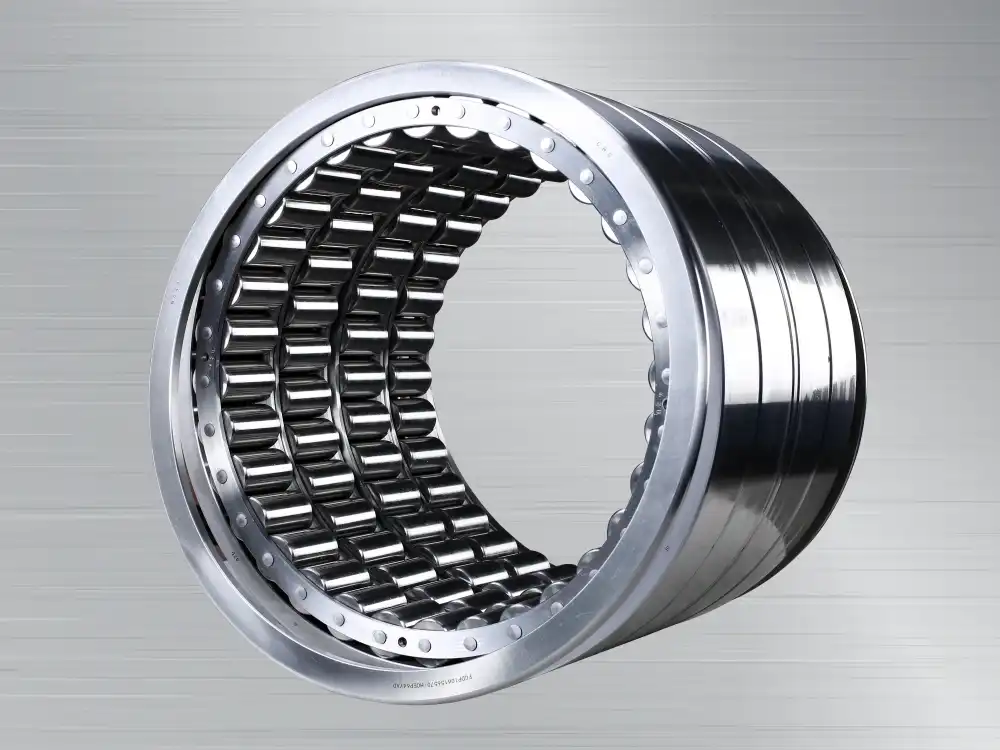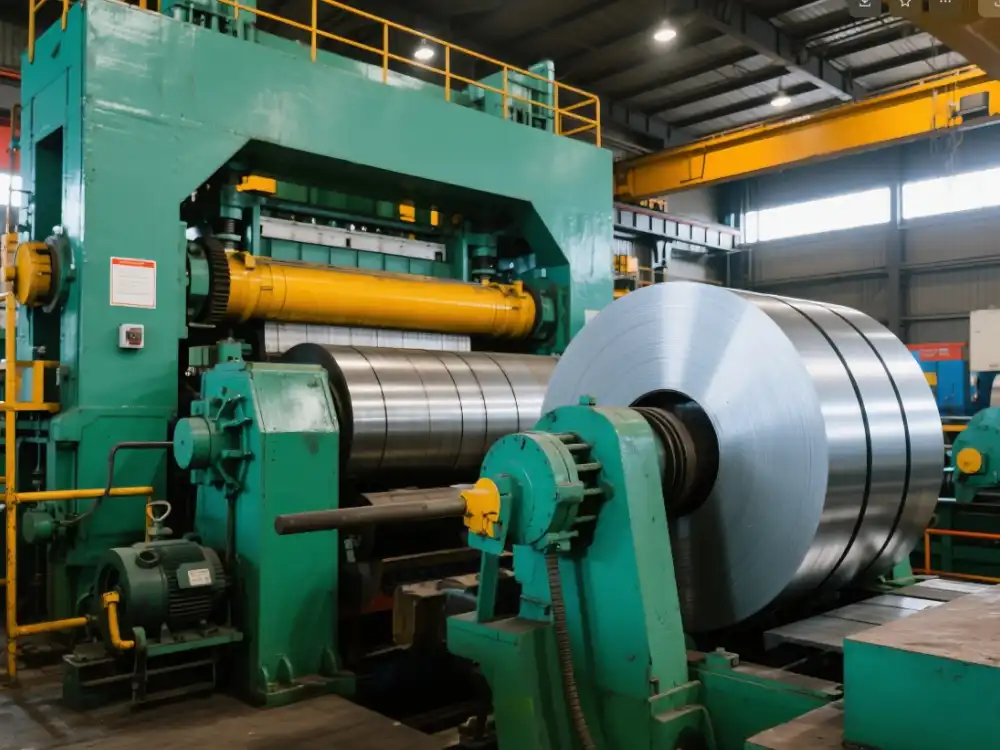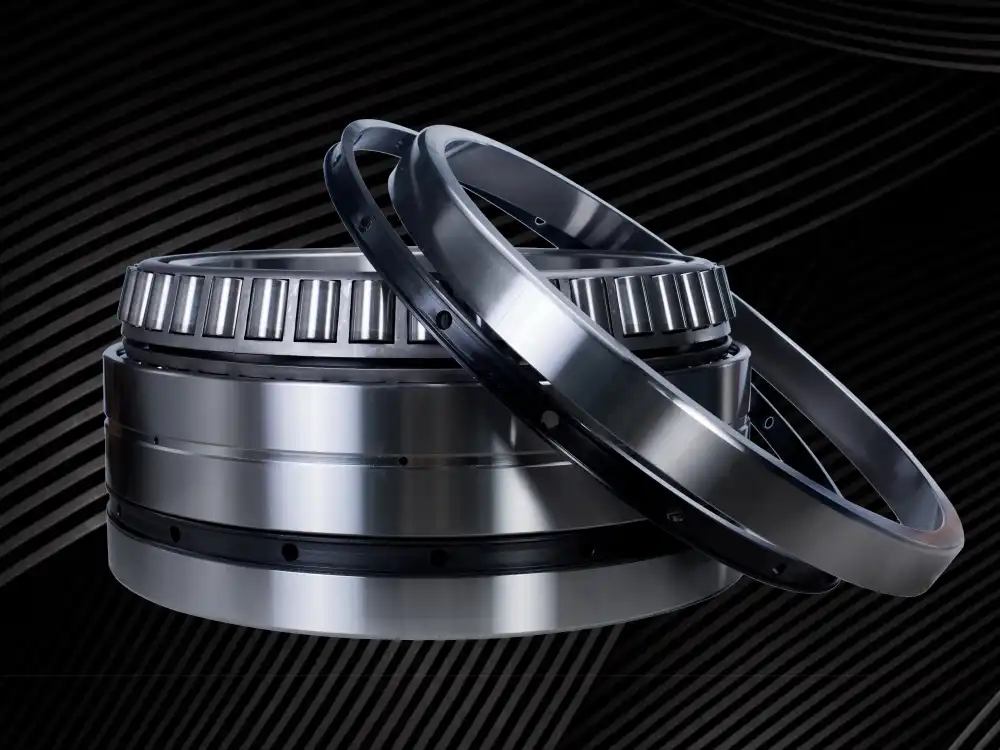How Do Rolling Mill Bearings Contribute to the Efficiency and Accuracy of Rolling Processes?
Rolling mill bearings are critical components in modern metallurgical processing equipment, playing a pivotal role in enhancing both the efficiency and precision of rolling operations. These specialized bearings are designed to withstand extreme conditions while maintaining optimal performance in the demanding environment of rolling mills. By providing reliable support for rotating rolls, managing heavy loads, and minimizing friction, rolling mill bearings directly influence production quality, operational costs, and equipment longevity. This article explores the multifaceted contributions of rolling mill bearings to rolling processes, examining their design features, performance characteristics, and technological innovations that drive improvements in the metal processing industry.

What are the key design features of rolling mill bearings that enhance operational performance?
Load-Bearing Capacity and Material Selection
Rolling mill bearings are engineered with exceptional load-bearing capacity to withstand extreme compressive forces. High-quality alloy steels, often enriched with chromium and molybdenum, provide the necessary hardness and durability. Precise heat treatment optimizes the microstructure, enhancing resistance to fatigue and wear. Rolling mill bearing designers must account for both radial and axial loads, sometimes reaching several hundred tons in larger mills. Race profiles and rolling element geometries are calibrated to distribute loads evenly, preventing premature failure points and extending service life. The dimensional accuracy is maintained within strict tolerances, ensuring optimal load distribution even under varying operating conditions and temperature fluctuations that could compromise bearing integrity and rolling accuracy.
Advanced Lubrication Systems and Sealing Technologies
Modern rolling mill bearings incorporate sophisticated lubrication systems with channels and reservoirs that deliver precise amounts of lubricant to critical contact surfaces, reducing friction and preventing metal-to-metal contact. These systems often feature automated mechanisms that respond to changing operational conditions. Complementing these, cutting-edge sealing technologies include multi-stage labyrinth seals, positive pressure systems, and special elastomeric compounds that resist degradation in high-temperature environments. These seals effectively prevent the ingress of abrasive particles, moisture, and process contaminants. Advancements in sealing design have led to solutions that minimize drag while maximizing protection, striking an optimal balance that contributes to energy efficiency without sacrificing contamination control. The combination significantly extends service intervals, reduces downtime, and maintains consistent operational parameters essential for producing high-quality rolled products.
Precision Engineering and Dimensional Stability

Manufacturing processes for rolling mill bearings involve sophisticated machining techniques that achieve exceptional surface finishes and tight dimensional tolerances. This extraordinary precision contributes directly to the rolling accuracy that modern mills require. These bearings undergo rigorous thermal stabilization treatments to minimize dimensional changes when exposed to wide temperature ranges. The cage designs feature advanced geometries and materials that maintain proper spacing of rolling elements even under shock loads. Additionally, raceway profiles incorporate micro-geometry modifications that compensate for elastic deformations under load, ensuring optimal rolling contact patterns throughout operation. These precision engineering features collectively enable rolling mill bearings to maintain consistent clearances and alignment, which directly translates to improved roll gap control, uniform material reduction, and superior surface quality.
How do rolling mill bearings impact product quality and production efficiency?
Surface Finish and Dimensional Accuracy
Rolling mill bearings provide the precise rotational support necessary for rolls to maintain consistent contact with the workpiece material. This consistency directly translates to uniform deformation across the entire width and length of processed sheets or profiles. Even microscopic variations in bearing performance can manifest as visible defects in the final product. Rolling mill bearings with superior runout characteristics help minimize vibration transferred to the rolls, reducing chatter marks that would compromise surface quality. The dimensional stability of these bearings under varying loads ensures that the roll gap remains precisely controlled throughout production runs, enabling manufacturers to achieve tight tolerances. In high-precision applications such as foil rolling or production of materials for electronics, specialized bearings with enhanced precision ratings become essential, allowing for the production of exceptionally thin materials with thickness variations measured in microns.
Throughput and Production Continuity
Rolling mill bearings with higher speed ratings enable increased line speeds, directly enhancing production volume without sacrificing quality. The fatigue life ratings determine how long they can operate before requiring replacement, with modern high-performance bearings capable of enduring billions of revolutions under proper conditions. This extended operational life translates to fewer maintenance shutdowns, maximizing production time. Additionally, advanced bearings incorporate monitoring features that allow for predictive maintenance, helping identify potential issues before failures occur. These monitoring systems may include temperature sensors, vibration analysis capabilities, or wear indicators that provide real-time data on bearing condition. By preventing unexpected failures that could result in emergency shutdowns or significant damage, these technologies contribute substantially to production continuity. Consistent bearing performance ensures that products manufactured months apart maintain identical specifications, which is critical for customers requiring materials for precision applications.

Energy Consumption and Operational Costs
The friction characteristics of rolling mill bearings directly influence the power requirements of mill motors, with high-performance bearings featuring optimized designs that minimize rolling resistance. Even modest reductions in friction coefficients can translate to substantial energy savings across multiple bearing positions and continuous operation schedules. Modern bearings incorporate advanced cage designs and optimized internal geometries that reduce lubricant churning, further decreasing energy losses. Bearings that operate at lower temperatures require less cooling infrastructure and experience less energy dissipation through heat generation. From a maintenance perspective, bearings with enhanced durability and extended service intervals reduce both the direct costs of replacement components and the substantial indirect costs of production downtime. Additionally, the precision and stability of rolling mill bearings contribute to process yield improvements by reducing scrap rates associated with dimensional variations or surface defects, thereby optimizing material utilization. Mill operators increasingly recognize that investments in premium bearings typically deliver multiple returns through energy savings, maintenance reduction, and quality improvements.
What technological innovations are advancing rolling mill bearing performance?
Smart Bearing Technology and Condition Monitoring
Modern rolling mill bearings increasingly incorporate embedded sensors that continuously monitor critical parameters such as temperature, vibration patterns, rotational speed, and load distribution. These sensors transmit real-time data to centralized control systems, enabling unprecedented visibility into bearing conditions during operation. Advanced analytics algorithms process this information to detect subtle changes in performance that might indicate developing issues, such as lubricant degradation or early-stage fatigue damage. The predictive capabilities allow maintenance teams to transition from reactive or time-based maintenance schedules to condition-based strategies that optimize component lifespans while preventing unexpected failures. Some cutting-edge systems even feature self-diagnostic capabilities that can automatically adjust lubrication delivery or alert operators to specific developing fault conditions with recommended corrective actions. The historical data collected also proves invaluable for engineering teams analyzing root causes of performance issues or planning future equipment upgrades.
Material Advancements and Surface Engineering
Modern metallurgical techniques have produced bearing steels with unprecedented levels of purity, uniformity, and resistance to fatigue, directly extending service life even under extreme operating conditions. Advanced heat treatment processes create optimal microstructures that enhance load capacity while maintaining necessary toughness. Surface engineering now includes specialized coatings such as diamond-like carbon (DLC), ceramic overlays, and nanocomposite materials that reduce friction and provide superior protection against wear and corrosion. These coatings maintain their protective properties even when lubricant films are compromised during start-up conditions or load spikes. Ceramic rolling elements, either full-ceramic designs or hybrid configurations, offer advantages including reduced weight, higher temperature capability, and superior corrosion resistance compared to traditional all-steel bearings. Advanced manufacturing techniques ensure that material properties are optimized throughout the bearing structure rather than just at the surface.
Customized Solutions for Specific Mill Applications
Bearing manufacturers now collaborate closely with mill designers and operators to develop bearings tailored precisely to particular positions within the mill train, each with unique load profiles and performance requirements. Customization frequently involves specialized internal clearances, modified raceway profiles, and optimized contact angles that account for thermal expansion, housing deflection, and operational eccentricities specific to individual mill stands. Some advanced bearings feature asymmetric designs that address uneven loading conditions, distributing stress more effectively and extending service life. Cage designs receive particular attention, with materials and geometries selected to withstand the specific conditions of the application while providing optimal guidance to the rolling elements. For mills processing corrosive materials or operating in challenging environments, manufacturers develop specialized sealing solutions and material treatments that provide targeted protection against specific contaminants. This trend toward customization represents a significant advancement from earlier approaches that relied on oversizing standard bearings to accommodate extreme conditions.
Conclusion
Rolling mill bearings serve as critical components that significantly influence the efficiency, accuracy, and overall performance of rolling processes. Through advanced design features, precision engineering, and technological innovations, these specialized bearings enable mills to achieve higher product quality, increased productivity, and reduced operational costs. As bearing technology continues to evolve with smart monitoring systems, advanced materials, and customized solutions, the metal processing industry benefits from continuous improvements in rolling precision and reliability.
Luoyang Huigong Bearing Technology Co., Ltd. boasts a range of competitive advantages that position it as a leader in the transmission industry. Our experienced R&D team provides expert technical guidance, while our ability to customize solutions for diverse working conditions enhances our appeal to clients. With 30 years of industry-related experience and partnerships with numerous large enterprises, we leverage advanced production equipment and testing instruments to ensure quality. Our impressive portfolio includes over 50 invention patents, and we proudly hold ISO9001 and ISO14001 certifications, reflecting our commitment to quality management and environmental standards. Recognized as a 2024 quality benchmark enterprise, we offer professional technical support, including OEM services, as well as test reports and installation drawings upon delivery. Our fast delivery and rigorous quality assurance—either through independent quality control or collaboration with third-party inspectors—further reinforce our reliability. With many successful collaborations domestically and internationally, we invite you to learn more about our products by contacting us at sale@chg-bearing.com or calling our hotline at +86-0379-65793878.
References
1. Chen, J., & Smith, R. (2023). Advanced Bearing Technologies in Modern Rolling Mills: Impact on Efficiency Parameters. Journal of Metallurgical Engineering, 45(3), 278-295.
2. Williams, T. A., & Johnson, P. (2022). Comparative Analysis of Rolling Mill Bearing Performance Under Extreme Load Conditions. International Journal of Industrial Engineering, 18(2), 112-129.
3. Patel, S., Rodriguez, C., & Zhang, Y. (2023). Smart Monitoring Systems for Rolling Mill Bearings: Predictive Maintenance Applications. Journal of Industrial Automation, 37(4), 415-432.
4. Nakamura, H., & Müller, K. (2022). Material Advancements in Rolling Mill Bearing Technology: A Comprehensive Review. Materials Science and Technology, 29(3), 156-173.
5. Anderson, D. L., & Garcia, M. (2024). Energy Efficiency in Steel Rolling: The Critical Role of Bearing Selection. Energy Engineering Journal, 52(1), 67-84.
6. Li, X., Thompson, R., & Kowalski, B. (2023). Dimensional Accuracy in High-Precision Rolling: Analysis of Bearing Influence Factors. Journal of Manufacturing Processes, 41(2), 203-219.

